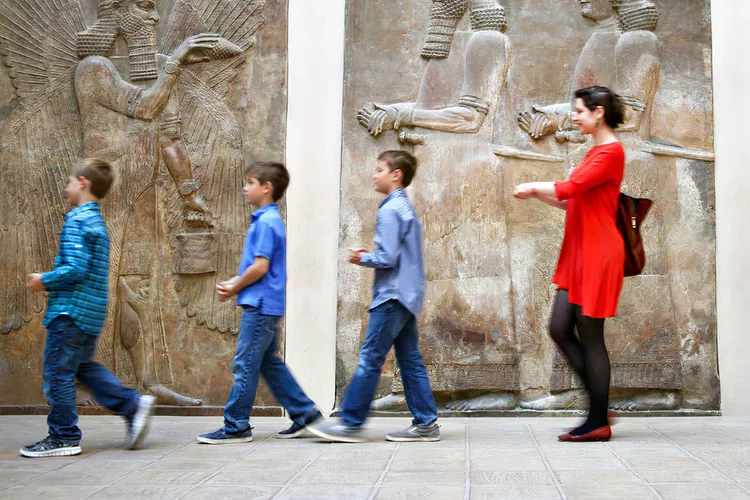1. Transform Your Family Trips with Expert Guides
2. Choosing the Right Tour Operators
3. Engagement Through Storytelling
4. The Importance of Intangible Qualities in Guides
If you normally shy away from organized excursions, consider hiring a pro to show you and the kids around—it could transform the trip for everyone.

On a trip to Paris a few years ago, I was eager to visit the Louvre, but tackling the enormous museum with our then four-year-old son and eight-year-old daughter sounded like a recipe for disaster. I had almost resigned myself to waiting until our kids were older when I came across a company called Paris Muse, which offers private family tours.
Our guide, Raquel Granda, created a scavenger hunt and took us down all the right corridors to streamline our spin through the colossal complex. She also encouraged the kids to imagine what the Venus de Milo’s missing arms might’ve been doing or holding, leaving my husband and me free to enjoy the art ourselves. What could’ve turned into an afternoon of tears and tantrums became the highlight of our week.
Some parents worry that a tour guide will complicate matters or give their family a standardized spiel. However, the good ones tune into the kids’ temperaments and allow adults to relax. “Your time and energy are precious commodities,” says Ellen McBreen, founder of Paris Muse. “It’s nice to get that mental break and say, ‘Right now, I don’t have to be the one to engage my child. I can enjoy the works myself.’
If our Paris trip taught me anything, it’s that putting a family trip in the hands of specialized pros is worth every extra penny. Therefore, whether you’re headed to a historic European city or a national park, the expert tips below can help you land the right guide for your crew.
1. Find Operators That Understand Kids
Ideally, you should seek out excursions specifically tailored to kids, says Angelo Carotenuto, founder and CEO of Rome-based LivTours. His company offers a deep dive into the Colosseum that equips young travelers with archaeological tools and VR goggles that render 360-degree reconstructions of the site. When kids have had enough history, they can also take a gelato-making class.
On select itineraries, including a sport- and nature-filled trip to Costa Rica, Thomson Family Adventures will pair kids with a pen pal in the destination, with whom they’ll exchange letters in advance and meet during a school visit.
2. Look for Engaging Approaches
June Chin-Ramsey, CEO of Context Travel, advises parents to consider tours from a kid’s perspective. One important question to consider is: “Does the company use compelling storytelling?” Context, for example, posts videos of its guides on its site to showcase their personalities.
Imaginative themes can go a long way, especially in popular destinations. Some of Context’s most sought-after family options include a samurai-focused tour of Kyoto and a Harry Potter-inspired whirl around London.
3. Factor in the Intangibles
Consider how soft and social skills influence your experience. What special insights or background might a guide bring? In what ways will a person remove obstacles you might encounter? “Our experts are talented, but it’s not all IQ,” says Chin-Ramsey of her Context team—the majority of whom hold advanced degrees in their fields of expertise. “We look for curious, open people who are also able to read the crowd.”
Yellowstone Forever, the philanthropic and educational partner to Yellowstone National Park, hires guides with profound knowledge of the park and the ability to improvise. This capability can save time and help avoid crowds. “In a park as large as Yellowstone, parents can be wrapped up in the details of just getting from place to place,” says Amanda Hagerty, director of the Yellowstone Forever Institute. “Our staff trains with the National Park Service. Being the park partner, we have access to resources others don’t.”
A version of this story originally appeared in the June 2022 issue of GoTravelDaily under the headline Guiding Principles.





